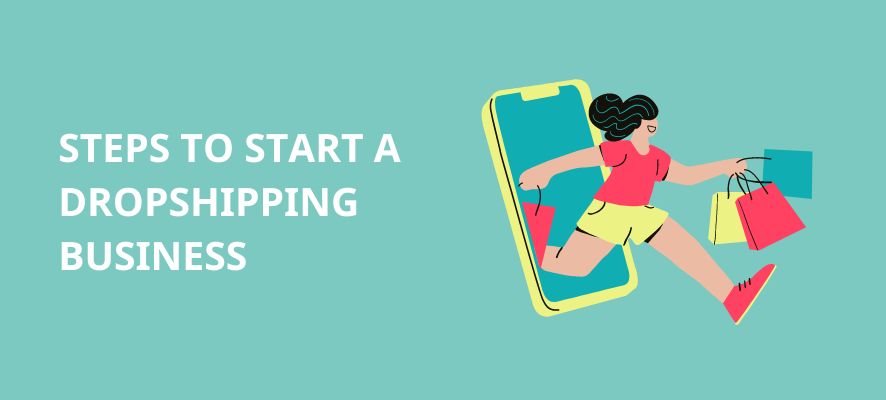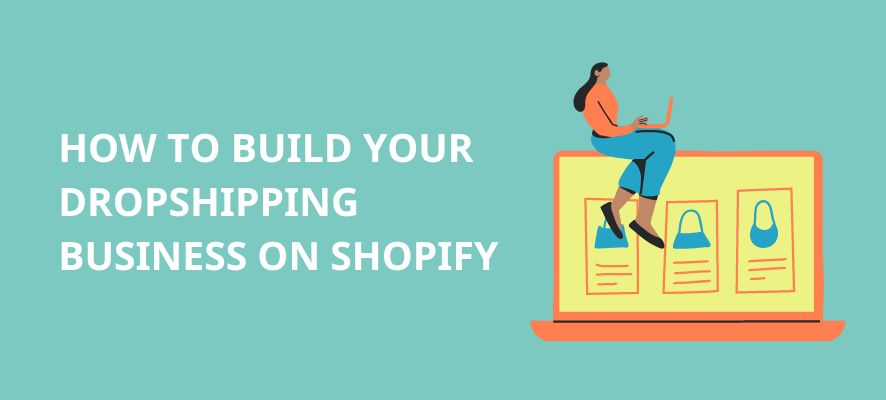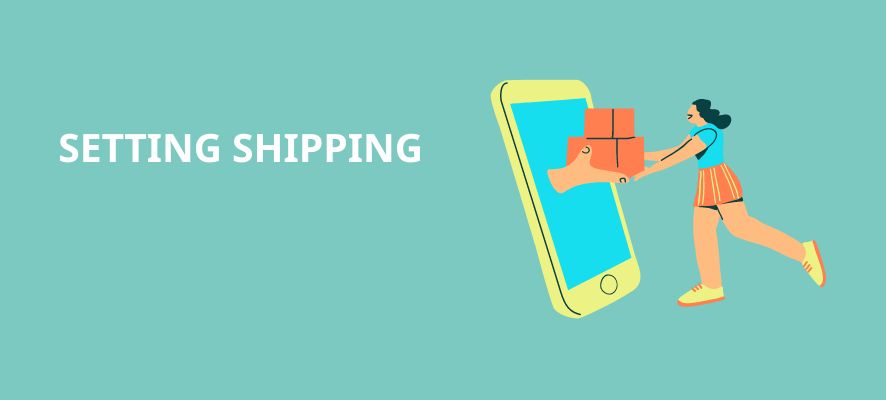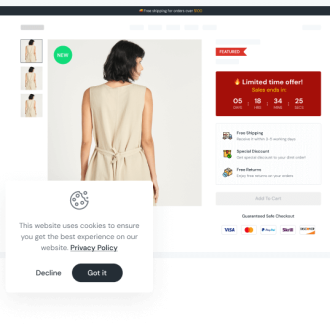Your dropshipping business will run more smoothly with Shopify since you won’t have to worry about handling inventory, packaging, or shipping. Orders are delivered directly to consumers by your wholesaler, allowing you to focus on the most important parts of your business: its customers, products, and marketing.
Steps to Start A Dropshipping Business

Dropshipping is a model business where you can collaborate with a third party to produce, hold your inventory, and ship products to customers. For starting a dropshipping business, you can follow these steps:
Step 1 – Choose a dropshipping business idea
Step 2 – Do competitive research
Step 3 – Choose a dropshipping supplier
Step 4 – Build your eCommerce store
Step 5 – Decide on a business structure
Step 6 – Get your finances in order
Step 7 – Market your dropshipping store
Step 8 – Analyze and improve your offering
Refer to the detailed guide at Getting Started With A Dropshipping Business.
How to build your dropshipping business on Shopify
Shopify is an ecommerce platform that can be a good choice when you build your online store. With Shopify, you will have an online website that collects traffic, builds a customer list, sells products, and processes payments. That means you don’t need to worry much about managing products and payments.
With Shopify, everything from choosing a domain name to including marketing and sales plugins is simple to build and launch. It’s a complete ecommerce platform that enables you to manage products and collect payments with ease, and it sells in many locations (including online) and in different currencies.
Shopify can be used by anyone; a designer or developer is not required. Additionally, the store builder and Shopify themes make it simple to customize the appearance and feel of your store template.

Design Your Ecommerce Shopify Online Store
Before you start building your Shopify ecommerce store, you may need to consider this checklist to ensure your store’s branding position.
A business idea – A business always needs a creative idea to make its store outstanding or attractive enough to customers. If you don’t currently have a business idea, you can take a look at other competitors’ business ideas for inspiration.
A business name – You will be asked to choose a store name when you begin your trial, and that name will serve as your default URL (for example, storename.myshopify.com). Don’t worry about choosing the ideal name right away; you can later get a custom domain (such as yourstore.com), even though you won’t be able to change it.
A Logo – You can work with a designer to make a logo that matches your business idea, or you can design a simple one by following the guide on how to design a logo from Shopify.
Photos – Clean product photography helps you catch customers’ eyes at first sight. You can use a mockup or shoot it yourself or with a photographer. Remember, you will need a white background along with some stock photos for lifestyle imagery.
Prepare your content
Besides the visuals, which attract customers first, you also need to focus on the content of your dropshipping business, both in terms of branding and SEO.
Firstly, the home page is where customers learn about your brand positioning and what kind of products or services you are selling. You need to introduce simply and clearly your brand and what your products or services are through copywriting or images.
On the other hand, product pages are where customers learn details about your products or services and decide whether or not to buy them. The necessary details, from cost to sizing, delivered in the right way, whether through text or images, can make all the difference. You might look at other websites in your market for ideas if you’re unsure of what to include while building your own online shopping website.
Product Title – Your product title should make it clear what the product is. Customers will see this as they visit your store, and it will help them identify the items they need in your catalogue. Keep it simple and highlight additional specific information or product options, such as colors or sizes, in your product description or variants (more on those later).
Product Description – Your product is described and sold in the product description. They often result in writer’s block as well. The good news is that anyone can write a strong product description; you don’t need to be a professional copywriter. Knowing your audience, highlighting incentives, identifying questions or objections, making your writing easy to understand, and encouraging customers to see themselves using your product are all that are required.
A tip for all if you know how to use keywords for SEO, you can put them in the product title and description to increase the chance of their appearance on the first page of search results.
Upload your product photos or other media
You can submit any visual media—photos, GIFs, videos, even 3D models—that helps you display more in-depth information about your items in the Media part of your product page. On the other hand, there are a few points you need to remember when uploading media:
- Use images that showcase your products in the most effective way. Keep your photographs clear and high-resolution.
- Try to keep your product photographs’ dimensions (the ratio between the width and height) similar so that they all appear to be the same size. When you design your online store, this consistency gives it a cleaner, more professional look.
- If you’re on a limited budget, most contemporary smartphones can take high-quality product images, which you can then edit for free using programs like remove.bg, which helps you do so.
- You can click on an image after you’ve uploaded it to make simple modifications like cropping and resizing. Making changes to the Alt Text will make your photographs more accessible to those who cannot see them.
Set your price
The price is what customers will pay to buy your products. In the event of a sale, you should use the Compare at Price area to describe what the item would usually cost. The section called “Cost per item” is also optional. You can use it to keep track of your profit margin for a certain product if you’d like. This allows you to track profit in your profit report if you have a Shopify plan or higher.
Don’t always assume that higher sales will follow lower prices. Customers often evaluate quality quickly by looking at the pricing. Don’t be hesitant to charge a premium price if you are offering a premium item, especially if you can support it with strong branding.
After you begin promoting, you can always go back and change your prices depending on what you discover. You might find that consumers are truly willing to pay more for the products you sell, or you might come up with creative ways to reduce costs and raise the average value for each order.
Setting Shipping

Dropshipping businesses are not limited to the marketplace. This is the reason why setting up shipping is quite important if you are selling in multiple markets. You will enter information to automatically determine shipping costs and print the necessary shipping labels for each order in the shipment section.
In Shopify, go to Settings > Shipment and Delivery to put your shipment plan into action. You can establish your shipping prices for consumers in specific countries by creating shipping zones here.
Within the shipping zone we just created, we can use the Add Rate button to create specific rates based on certain conditions. Generally, you can save time and money on shipping while making more per sale by encouraging customers to add more items to their orders.
The shipping information you provided when adding your products and the package measurements on the Settings > Shipping page are used to calculate real-time shipping costs. At checkout, customers can select their chosen service and rate.
In addition to the delivery service’s charges, you can change these prices to include a handling charge to cover additional expenses like packaging or your time.
Setting Tax
Every time customers order from your store, as a business selling goods or services, you must collect taxes to give to the government (with some exceptions, such as for digital items in many jurisdictions).
Using global default sales tax rates, Shopify will assist you in handling the majority of tax calculations automatically. To be sure you’re charging the appropriate amount of sales tax, it’s a good idea to do some research or see a tax expert.
If your location has specific tax laws, such as taxes on specific products or shipping, you may change the default tax settings.
Go to Settings > Taxes and Duties in Shopify to set up your tax regions. Here, you can edit the default rates if you like or apply overrides if specific conditions apply in your region or to your products.
Connect A Payment Gateway
To set up your payment provider, go to Settings > Payments. With Shopify Payments, it’s simple to start accepting all major payment methods.
Shopify Payments may be activated with just one click, and there are no additional transaction fees to pay as long as your business is run in one of the supported countries and does not qualify as a forbidden business. Offer your consumers extra payment options, such as PayPal, or pick from over 100 third-party payment providers available here.
Customizing your email notifications (optional)
Shopify comes with a series of ready-to-use automated email and SMS notifications to let customers know about order confirmations, status updates, and more.
In Conclusion
Above are some useful sections you may get help with, and need to focus on if you are launching your dropshipping business on Shopify. In case you want to know more about setting up an online ecommerce store with Shopify, you can check out other topics in the blog category.
If you run into trouble while creating your own Shopify store, you can skip ahead and come back to it later, search our Help Centre for solutions, post a question in the Shopify Community, take our Getting Started with Shopify course, hire a professional to set up your store for you or get in touch with our award-winning 24/7 support team.



